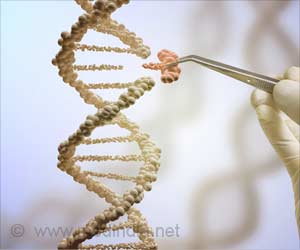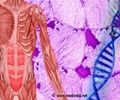
‘Defects in SETD2 could not only affect gene expression but also affects functions controlled by the cytoskeleton like movement, metastasis and migration, which are vital for cancer cells.’
Read More..Tweet it Now
The cytoskeleton gives a cell its shape and internal organization and provides mechanical support that enables cells to carry out essential functions like division and movement.Read More..
"Our findings suggested that defects in SETD2 could not only affect gene expression but also functions controlled by the cytoskeleton, such as movement, metastasis and migration, which are very important for cancer cells," Walker said. "We wondered whether SETD2 might target other cytoskeletal proteins."
SETD2 works with Huntingtin and actin to manage cell migration
SETD2 interacts with the actin cytoskeleton and is able to modify actin in cells or in reactions using purified proteins. SETD2 adds three methyl groups to actin at a location called lysine-68. Interestingly, they found that SETD2 interacted with two other proteins to methylate actin in cells: Huntingtin (HTT) and the actin-binding adapter HIP1R.
Trimethylated lysine-68 regulates the normal dynamics of actin, including polymerization and depolymerization. Disrupting the SETD2-HTT-HIP1R association inhibited actin methylation, caused defects in actin dynamics and impaired cell migration, an important function of cancer cells.
Advertisement
"There was a limited list of papers about Huntingtin involvement in actin dynamics and cell migration, but enough to pursue the SETD2-Huntingtin-actin connection."
Advertisement
A role for SETD2 in autophagy
"Dr. Walker's lab has an extensive background and expertise in studying autophagy," Seervai said. "There was always a suspicion that SETD2 might be involved in this process, but it had not been tested. This project got off the ground once we performed the initial experiments looking at autophagy markers and found differences between cells with functional SETD2 and those without it."
Disrupting SETD2's ability to methylate actin at lysine-68 caused defects in actin polymerization. In autophagy, disrupted actin polymerization altered actin's interaction with another protein called WHAMM.
As a result, the cells had autophagy defects. Significantly, there were no changes in the expression of any autophagy-related genes, further suggesting a role for SETD2 cytoskeleton modification rather than its chromatin function. The details of this work were given in the journal Biochemical and Biophysical Research Communications.
A rapidly growing field of cell biology
"Actin modifications, such as the addition of methyl groups described here, have been aptly dubbed the 'Cinderella of the cytoskeleton' and are only now being recognized as key regulators of cytoskeleton dynamics," Seervai said.
"But our findings and those of other groups are changing this perspective. More researchers are expressing interest in this new aspect of cytoskeleton regulation and we anticipate new discoveries pointing at potential new therapies for conditions involving cytoskeleton defects."
Seervai was also involved in organizing a special interest subgroup at the ASCB/EMBO Cell Bio 2020 virtual meeting on post-translational modifications of the cytoskeleton, including actin and tubulin.
"We had nearly 300 people, including the ASCB president, at our session this year. From what I've heard, this is a sign that things have turned a corner for the field since such a session was first organized several years ago."
Source-Medindia










